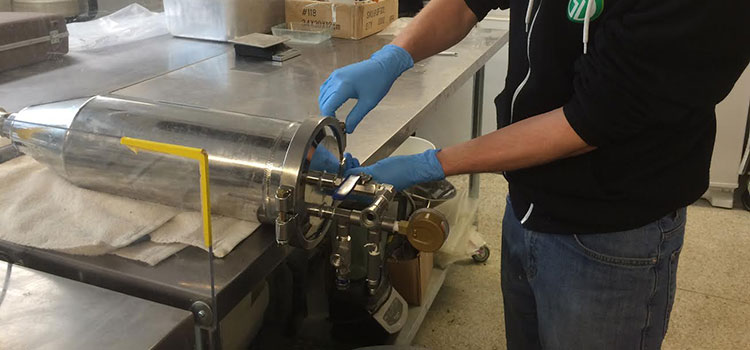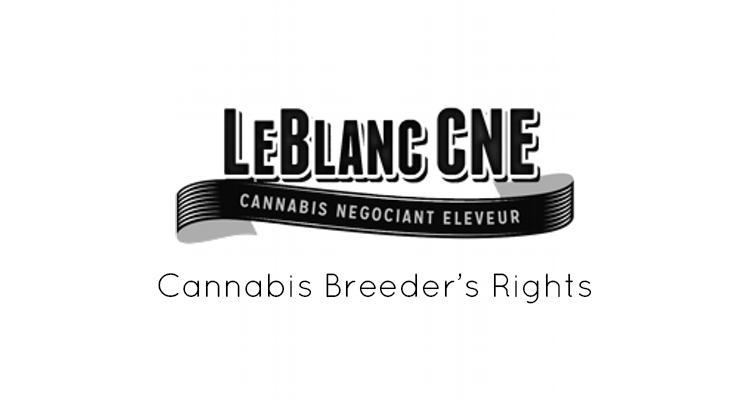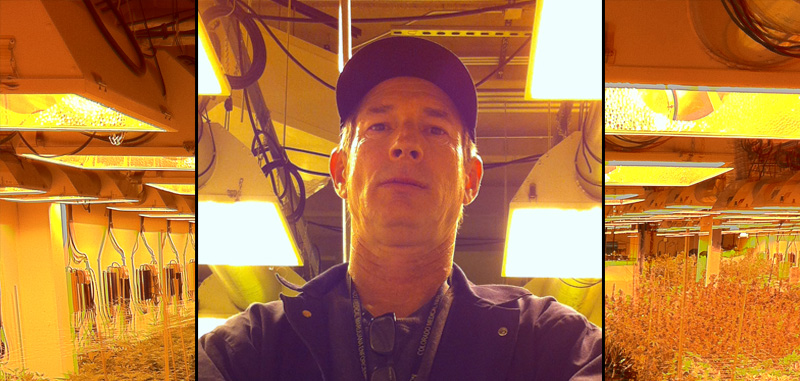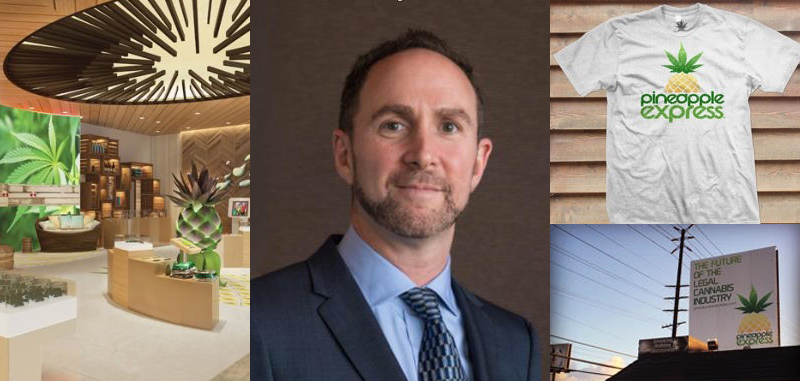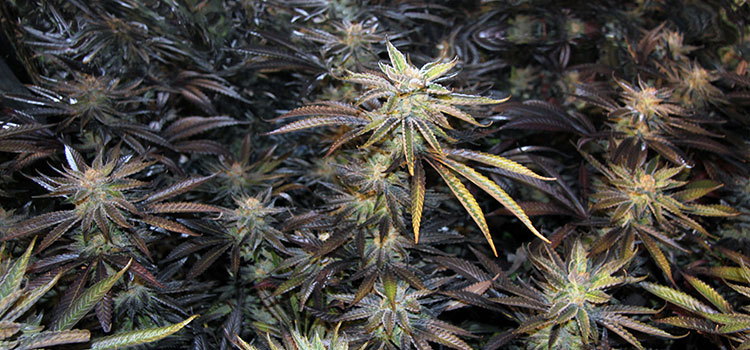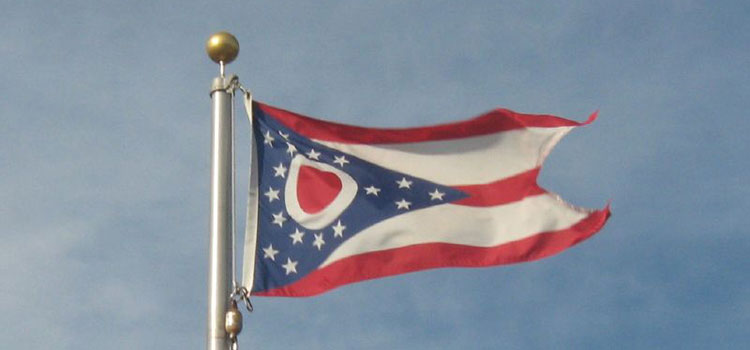Ken “K” Morrow of Trichome Technologies has been at the forefront of cannabis horticulture for decades. His writing has appeared in High Times magazine 50 times over the last 15 years. He has won 9 California Cannabis Cups between 1997 and 2000, has worked as a consultant to many of the top cannabis activists, legislators, scientists and doctors, and he also recently published Marijuana Horticulture Fundamentals, a comprehensive guide to cannabis cultivation and production. K recently joined our podcast host Shango Los for a discussion about his long career in the cannabis industry, what it’s like to witness legalization happening after spending so much time as a prohibition-era grower, how hash making processes have evolved over time, and more!
Listen to the podcast below, or scroll down to read the full transcript.
Subscribe to the Ganjapreneur podcast on iTunes, Stitcher, SoundCloud or Google Play.
Listen to the podcast:
Read the full transcript:
Shango Los: Hi there and welcome to the Ganjapreneur.com podcast, I am your host, Shango Los. The Ganjapreneur.com podcast gives us an opportunity to speak directly to entrepreneurs, cannabis growers, product developers and cannabis medicine researchers all focused on making the most of cannabis normalization. As your host I do my best to bring you original cannabis industry ideas that will ignite your own entrepreneurial spark and give you actionable information to improve your business strategy and improve your health and the health of cannabis patients everywhere. Today my guest is Ken Morrow, a fellow much better known over the last 30 years as K. from Trichome Technologies.
Ken is truly an OG, he has been at the forefront of cannabis horticulture for decades, his writing has appeared in High Times magazine 50 times in the last 15 years. But perhaps his greatest influence has been sharing his experiences informally to small groups, individuals and mentoring others online. In 1999 he was chosen by High Times magazine as having the best grow room in their 25 year history, between 1997 and 2000 he won 9 California Cannabis Cups. He has consulted for many of the top activists, legislators, research scientists and doctors and was featured on an episode of 60 Minutes and has appeared on CNN. K has just published a gorgeous new book title, Marijuana Horticulture Fundamentals, a comprehensive guide to cannabis cultivation and hash production.
Today we’re going to talk about his new book, some cannabis cultivation history and his deep knowledge of hash making techniques. Thanks for being on the show Ken.
K. Morrow: Thank you very much Shango for having me, it’s a pleasure.
Shango Los: Ken, having participated in cannabis for the last 30 years, to see some cannabis legalization finally happening has got to be both a shock and a relief. What has this experience been like for you?
K. Morrow: Shocking to say the least, to see politicians embrace us, to see the whole movement moving forward is just, I honest, me and my friends. Speaking with Mel Frank the other day, never really seen this way happening in reality.
Shango Los: It must be really encouraging to, because we all, back in the prohibition days we were like, if we could only live long enough to see legalization and it’s like, holy smokes it’s here. That must be really gratifying for somebody like you who did so many years of research under prohibition where it was a combination of taboo, disrespect and trying to not get in trouble. It must be a real liberating feeling now to finally be able to step out and have at it.
K. Morrow: Let’s just say it’s gratifying to be proven right in the end. You know, as I said, speaking with Mel Frank yesterday, he’s approaching 70 and he thought he was retired and that was the end of the game and he’s never been so busy as he is right now, it’s incredible. Someone suggested he put his photos in a art exhibit and he literally doesn’t have time to do so.
Shango Los: Good for him, so what has it been like for you going from kind of the shadows of cannabis. I mean you were known as K from Tricome Technologies and now we’re like audaciously saying your name, Ken Morrow, on the air. What does that feel for you to come out from where you are a thought leader in the industry but you had to use a pseudonym to still being a thought leader in the industry. But being able to claim that respect with your real name.
K. Morrow: Still every time someone approaches me and uses my first and last name I expect them to pull out a badge, and that’s reality, you know. It’s shocking to me, it’s very humbling, I’m not really the type of person to be in the spotlight so to speak. It takes me aback a little bit.
Shango Los: Right on, well you’re definitely going to be in the spotlight even more here in the next few months promoting your new book, congratulations on that. It is a really gorgeous volume, one of the things I appreciate most about it is the conversational tone you take, reading it feels like hanging out with you and just having you explain it to me and it makes the writing really immersive. I also appreciated that the book isn’t just packed with bud photos like some are, your photos are very explanatory of what you’re trying to say and they really support your writing. Did you find it challenging distilling your vast 30 years of experience into a single book?
K. Morrow: It was kind of unusual but, like I kept it to the basic fundamentals, just teaching people how to do, what to do and all that kind of stuff was just kind of start at step 1 and go to step 100 kind of sort of thing. Thank you very much for your kind words, it’s a labor of love first and foremost and the limited amount of pictures that are in the book also reflect my amount of work. 40% of the photos in the book are actually my work, I actually did the work, grew the plants, manicured them, dried them, cured them, cloned them, everything else. I’m very proud of that fact that most of the work in the book I did myself.
Shango Los: Well and you can really feel that too because when somebody is taking photographs, say for an internet forum or something and the goal is to show how to do something, they show pictures that are very step by step and that’s what I experienced with your book too. I got to say, when you say the limited photos in your book, you must mean limited versus what you have totally because I thought the book was jam packed, I mean it’s colorful, it’s beautiful. There’s plenty of real solid narrative and you’re explaining me how to do things but it is, there’s so many pictures there that if pictures say a thousand words. It’s as if the book is four times the length because the pictures that you have taken intentionally really do a lot to explain what you’re trying to break down.
Had you always wanted to write a book, since you are already a writer for High Times, or did somebody give you an idea or even beg you to do it?
K. Morrow: Well I was fortunate enough that I knew the owners of Green County Press and they gave me the opportunities and the qualities that you are speaking of. The layout, the design, the color, everything else, the credit really does to Green County Press, their team, everything else. I just wrote the words, I’m proud of the photographers, they’re some of the best photographers in the industry. From Mel Frank, to Bubble man, to Andre Grossman on and on and on. One of the things I’m proudest of in the book is that I was able to give love back to my community, if you look at the acknowledgments, if you look at the references. I explain to people this isn’t the best book, if you buy the book from George Savantes, from Mel Frank, from Ed Rosenthal, from Robert Connel-Clark. If you buy all the information, read all the information then you’ve got a tenth of the picture so to speak, so I’m very, very proud that I’ve got to give love back to people like Thomas Alexander who did the magazine. Sensinalia Tips and many other obscure individuals that people don’t know who they are but, this is how we got where we are today.
I really, really took pride in giving credit to the people that came before me.
Shango Los: That’s really great, you know, another think that I liked about the book is you know, when I was in college and just starting to read these books. The only publishers, like C level, D level publishers were putting out these books and they, you know the binding wasn’t very good and the pictures were kind of a drag and sometimes things were out of focus. But now that people can get behind this and the quality is going up, it’s really a beautiful volume and that’s nice. Because you’re right, there are several different books that you can pick up and only know a tenth of what you will eventually know as a cultivator but it sure is a pleasurable experience when it looks good in your hands.
K. Morrow: Thank you very much.
Shango Los: Right on, so what do you say Ken is one of the most under publicized but extremely helpful new techniques or piece of information that growers should know?
K. Morrow: Right now it’s just, how to you start with your design of your facility, with the mass proliferation of cultivated marijuana in the United States, the wholesale prices dropping, dropping, dropping. The number one piece of advice I can give is be mindful of your actual costs of production, I mean if you’re selling grams for $6.00 but but it costs you $9.00 to produce you’ll very soon be out of business. Be mindful of when you’re creating you’re efficiency to not cut corners because you can create efficient production and still produce top quality cannabis is what I’m saying. That’s the whole thing, is really mindful of your actual cost production and the efficiency of your production facility is the biggest thing I can say.
Shango Los: If we’re going to be talking specifically about saving money and efficiency, are you down with LED lights now?
K. Morrow: Yeah, well LED lights and induction lights are fantastic for cloning and fantastic for vegetative, not for flowering in my opinion at this point. They will get to that level very soon but, a large scale facility I’ve very rarely see an LED bank over their flowering production facility.
Shango Los: It’s amazing that LED is going to have to give up a lot of the bad reputation it had before it had gotten this far. You know, in the early days people were like, let’s use LED and then everything was all laggy and it didn’t work right. But now there’s been so many jumps forward in the technology and the ability to really hone at 6,700K or whatever you want to grow at, to be able to adjust that. The technology really has come a long way, before we go to the break, what’s another good efficiency tool that you think that new school grow rooms should have?
K. Morrow: On a large scale I explain to people the matrix is from what I see it being now is 90% of the product that’s produced today is going to end up turning into concentrates, people are only going to consume the top 10%, the best of the best. The rest of it will be ripened up, once it’s ripened up in a two week period you’re going to get a accentuated level of cannabinoids and terpenoids, up to 25%. In that two week period, if you get up take of and ripening of your desirable compounds like I said, by eliminating the process of cutting them down, replacing them, utilizing that square footage efficiently and properly, ripening up that lower material if you will. You’re going to get a 25% increase, that will take two weeks, two weeks times four is eight weeks, that’s a whole flowering cycle. If you can get the same amount of cannabinoids and terpenoids by ripening up the same material, you get to skip one growth cycle but get the same amount of desirable components.
Therefore you save the money on that whole production cycle then you’re going to turn around and you’re going to, since you only took 10%, the other 90% is going to get fresh frozen so you’re not going to really dry cure, you don’t have to build a huge drying and curing facility for that purpose if you will and the equipment and the labor associated with that process. On a 36,000 square foot facility one of my clients spends between $100-140,000 dollars per month to trim 400 pounds and this is a monthly cost. Well the other 90% won’t be dried, it won’t be cured, it won’t be trimmed so you can eliminate that cost, that stuff will be fresh frozen and extracted. By doing so you’ll get an increased level of terpene content by the simple action of drying you’ll lose up to 30% of the available terpenes on the plant. So by not drying and not curing you saved all the labor costs, production costs, everything associated with it and the final product is a terpene rich concentrate that you can turn into anything you want from there. Therefore, that’s the matrix and that’s how you produced and saved yourself millions of dollars in drying, curing and space allocation.
Shango Los: That is such a beautiful and elegant solution and one other great thing about it is that it is simply a different way of thinking about it instead of actually having to spend money on some kind of new equipment. But we’re going to take a short break and be right back, you are listening to the Ganjapreneur.com podcast.
Welcome back, you are listening to the Ganjapreneur.com podcast, I am your host Shango Los and our guest this week is K from Trichome Technologies. So K, when you were getting into all this 30 years ago, you guys were breeding with landraces and seeds were coming in and shipments, a lot of you guys were going out and traveling internationally and looking for the seeds and bringing them back. But really you were the building blocks, where landraces, the way mother nature had created them in these bio regions all across the globe. Well now a days it’s harder for them to get their hands on the landraces both because we’ve got so many hybrids that are in the economy now, that people can just start with a high quality hybrid instead of a landrace. But also a lot of the landraces in these generally third world countries have been muddied by breeders taking their genetics there to trade. What have you seen has been the big difference between working with landraces for breeding like you did 20-30 years ago versus working with hybrids primarily, which is what people are doing now?
K. Morrow: Well hybrids are much more stable, back in the day when you were dealing with landraces you would go and you would breed new plants and the genetic diversity that you got from the progeny of those plants was very, very, very diverse. With the hybrids it’s a little bit closer, you’re still dealing with a massive amount of genetic diversity if you will but not as wide. You know with the old landraces you could get anything, you know, short, squat, tall. Usually undesirable, very, very lanky and a long, long growth cycle so, both through breeding, genetic selection if you will, turning out the hybrids. The hybrids, you know, you’re still going to get a lot of diversity but certainly not as much as you would with the old school hybrids.
Shango Los: You know I must admit I’m kind of surprised by your answer, I thought you were going to tell me we had whittled down our genetic diversity in a negative way because the original landraces had held so many options. But actually what I’m gathering is those wild plants and those wild seeds they were harder for breeders because they were like a bucking bronco. Whereas the hybrids now have been settled down to the point where that you can still draw out genetic diversity but, there’s a lot less static and noise in the signal. Am I, am I picking up what you’re putting down?
K. Morrow: Yeah, but understand that’s kind of speculation on my part, there’s still a lot of those landraces out there available that have been collected and we really don’t know what the benefits of those plants are because we’re just coming into the age of proper analyzation if you will, what if the old Whahakin from 1977 had a elevated level of a desirable component that we’ve somewhat lost. In the future I expect it will go back and cherry pick some of those to breed them into our current hybrids if you will.
Shango Los: You know a couple times on this show over the last couple months we’ve gotten to the conversation of how technology is helping breeding and we had a really good show with Reggie Gaudino from Steep Hill. Talking about what will be necessary to get patents on these plants and he was suggesting F9 is going to be necessary and how much nicer it is to be able to work with the technology that’s available now to find out so much more about the genetics of the plants and not have to grow them up to maturity. In what ways are you using some of these new technology tricks that are available to us to better your own breeding program?
K. Morrow: There’s only 3-4 genetic programs going on right now and for the benefit of the industry they’re not really focusing on genetically modified cannabis because fortunately nobody really wants this and so I don’t really see it being profitable. People talk about, you know, I won’t mention the names but multiple large scale corporations coming in and monopolizing this throughout their genetics. I just don’t see that really happening because you’ve got multiple programs right now doing DNA research, I believe that that DNA research will guide the selections of genetics we breed in the future and as the great David Watson pointed out, it’s much easier to get the desirable results or compounds or whatever you’re looking for by selective breeding then genetic modify. That’s what I’m looking for right now is to see if, multiple times have mapped the cannabis gene, both sativa, hemp, this that and the other thing. Someone in Canada with a Purple Kush and another hemp variety and I think that that technology is really going to aid in producing the desirable strains, varietals, compounds that we want in the future.
Not varietals but cultavirals if you will.
Shango Los: Yeah, yeah, so I understand from talking to you the other day that one of the things that really has got you juiced right now is doing extractions and you know, you’ve been doing extractions for decades. But specifically doing extractions to isolate particular aspects of the plant that meet particular patient needs so that you can customize an extraction for them to either take orally or to smoke that will help their particular ailment. Tell us a little bit about how you’ve been approaching that?
K. Morrow: Well it’s just, as a kid wants to take apart a toy, I look at the, once you’ve extracted something you understand that there’s multiple components. Well how do you separate those components, so you go back into basic organic chemistry but then you’ve got to go look at other people’s patents and equipment used and stuff, pick pieces and parts from other industries to try to accomplish your goal if you will. But, you know, how do you separate THC’s from CBD? Well me and multiple other people have figured out that be it from either the drug cultivars or the hemp cultivars. Then you separate the terpenes, well how do you fraction-ate the terpenes into the separate compounds and do that. It was just a fascination thing, you know, challenge myself, see if I could, try to figure out how. Now I’ve figured them out and I’ve separated them all, I’m not qualified to say or speak about what they’re good for or what they do.
I consider myself just a formulator, I formulate products that are going to be utilized by medicinal corporations if you will in the future. That’s all I’m really trying to do is formulate products to, when the members of the International Cannabinoid Research Society or the Research Institute of Pharmaceutical Sciences wants pure pharmaceutical grade compounds that they can research, I want to be the person that provides them.
Shango Los: Right on, so I’ve got a question for you, but I want to say up front that this is not a leading question, I don’t have an opinion on this. I am looking at this for your opinion. We’re all big fans of whole plant medicine, the entourage effect, we’ve had Ethan Russo on the show talking about how the THC, the terpenes and the cannabanoids are all working together in concert. What do you feel about teasing apart the plant to find it’s discreet parts and then putting them together into a customizable oil? Do you still feel that that is whole plant medicine at that point?
K. Morrow: Whether it is or whether it isn’t, say that you just separated betakeraphaline oxide from a cannabis plant or some other compound that you couldn’t get from another source. If you found out that there was an ailment that that basic component was good for you might put that whole compound back on to the whole plant extracts. Yes, there’s going to be some ailments that you know, require or are treatable by certain compounds, so why would you give them a whole plant extract if they don’t need a whole plant extract? If they just need part A, part B, part C, I mean based on the anecdotal evidence I see this thing has multiple, multiple benefits. I can’t see that the exact chemical composition and ratio is fixing all those different things and maybe one would be helped if it had an accelerated or a higher level of a different component. That’s kind of, I’m not, again qualified to speak but that’s what I’m trying to put together. If someone figures out that I’ve got this great whole plant extract that I wish had more betakeraphaline in, okay boom, there you go.
Shango Los: Right, that actually kind of teases out a new in-between position that I haven’t seen before because you know a lot of people really got into whole plant medicine after Merinol came out. That just isolated THC and didn’t have nearly as good as an effect as whole plant medicine does. But you’re right, with the new technologies and with the new research that guys like you and others are doing, we actually can kind of rebuild a whole plant without just isolating one single part. I’m going to have to mull on that in the shower a little bit. But also for right now we need to take another break. You are listening to the Ganjapreneur.com podcast.
Welcome back, you are listening to the Ganjapreneur.com podcast, I am your host Shango Los and our guest this week is K from Trichome Technologies. Right before the break we were talking about the evolution from just growing cannabis to all of the new school extraction techniques and you know Ken you were there in the early days when people first started talking about BHO. Would you give us a little time machine moment and go back because we’re all excited about extracts now and comparing/contrasting, just give us a little snapshot about what it was like when people started moving beyond just simple hash and into hash oils and these new extraction techniques?
K. Morrow: Well it’s kind of a weird evolution, first cannabis started getting better and better and better so it started producing accelerated levels of THC on the waste materials, be it the trim. I started playing with the trim. There was no internet, there was no information, you couldn’t figure out how to do this so I started. You know, there was very few books or information on how to make hashish, the art was kind of lost in North America until the book from Robert Connel-Clark called Hashish came out and then it demystified everything. But, so I started breeding cannabis and that cannabis produced accentuated levels of chemicals, well I wanted to isolate those chemicals so I taught myself dry sieve.
Then I got a piece of communications from Neville Shoemacker and David Watson that kind of basically, loosely explained the water separation method. So I delved into that and published with Mel Frank the first water hash and dry sieve article in High Times magazine in 2000. Very soon after that produced the very first BHO abstraction article for Red Eye Magazine, in the year 2000 for Red Eye Magazine. 16 years ago explaining the process of BHO extraction but also write the first Rick Simpson article long before he did I just didn’t claim it had a care for cancer, anything like that. It was just a raw hash oil extraction, something the people had been doing for thousands of years so I certainly didn’t invent it or anything else.
I’ve been participating in the concentrate thing for a very long time, so the butane thing, you know, just the raw extraction from trim. But then you started extracting from bud and how do you super refine, how do you refine … a video called medicinalalchemy.com came out, that kind of pushed the industry forward. It taught the person how to make shatter or butter at their house, so that kind of proliferated, helped the industry go.
But the High Times Cannabis Cups, people meet every month and they share information, the internet, they just started to literally explode and then the processes of winterization and the uses of application like vacuum drying ovens or rotary vaporization apparatuses or close loop systems. People are getting hard core crash courses in organic chemistry in the past two years so, to see the thing massively proliferate like this has just been something to watch in the past two years it’s pretty incredible.
Shango Los: Yeah it is really exciting and it’s also kind of strange too to some of the early prohibition growers. I remember the first time I explained a nug run to you know, somebody who’d been growing since 1976, he was aghast right? Because he grows these beautiful flowers and he wants to take care of them and the idea that we were going to put it in a mechanical extraction technique to take out the essential parts was like, some kind of heresy. When you first started doing this all those years ago, were you getting that kind of push back too? You know, that’s cute what you’re doing but what the hell are you doing?
K. Morrow: Yeah, well it didn’t really become commercially viable until like I said, the wholesale price of cannabis dropped. I mean at this point, you know, you can get more for the concentrate than you can the raw flower, so the dynamic has really, really shifted. Once you explain to that individual, I’m going to take your beautiful flowers and turn them into something more desirable on the open market then he completely understands and that’s where it goes.
Shango Los: Yeah, that’s a good point, and that’s probably the big difference too between in the early days you were just using trim, which used to be called trash, which is now totally not trash versus the prices coming down so much that you can use flower. Also probably, there’s probably more people growing now then there ever has been and so there a lot more you know, B- and lower flower on the market that doesn’t have to bag appeal to even be sold at retail, so there’s just more of it in general probably too.
K. Morrow: Correct.
Shango Los: In the early days did you kind of you know, Johnny Appleseed it a bit, you’re very clear that you know, you shared bringing this knowledge out with other people and that is good. But in your own world were you finding that you were going around kind of turning people on to this technique and blowing their minds? Much like you know, people are doing now by turning on their friends to doing a rosin press and hair straightener and like everybody thinks they’re a Demi God. I can imagine that as you were taking this run and showing people their mind was kind of blown.
K. Morrow: Kind of stayed to myself, so I just showed to to a very small handful of friends you know, Ed Rosenthal, Rob Clark, people like that. I don’t really go out and show my wares just for the sake of showing my wares, you know.
Shango Los: Right on and if you’re going to talk about the people you showed it to you certainly named two out of the pantheon right? Ed and Bob so, well.
K.” Morrow: I explained I only got where I am because of people like them.
Shango Los: Right on, we’re all standing on somebody else’s shoulders right?
K. Morrow: For sure, for sure.
Shango Los: Ken, that’s all the time that we’ve got for today. Thank you so much for being on the show and sharing your vast experience with us.
K. Morrow: Thank you so much for having me it’s really been a pleasure.
Shango Los: You can find out more about Ken Morrow, his speaking engagements and his new book Marijuana Horticultural Fundamentals, a comprehensive guide to cannabis cultivation, has production on his Facebook page. At Facebook.com/TrichomeTechnologies. We also have a link to his book on Amazon in the notes attached to this podcast, you can find more episodes of the Ganjapreneur podcast in the podcast section at Ganjapreneur.com and also in the Apple Itunes store. One the Ganjapreneur website you will the latest cannabis news, product reviews and cannabis jobs updated daily, along with transcriptions of this podcast. You can also download the Ganjapreneur.com app in Itunes ad Google Play. You can also find the show on the I Heart Radio Network app, bringing the Ganjapreneur podcast to 60 million mobile devices.
Do you have a company that wants to reach our national audience of cannabis enthusiasts? Go ahead and email us at grow@Ganjapreneur.com to find out how. Thanks as always to Brasco for producing our show, I am your host Shango Los.



